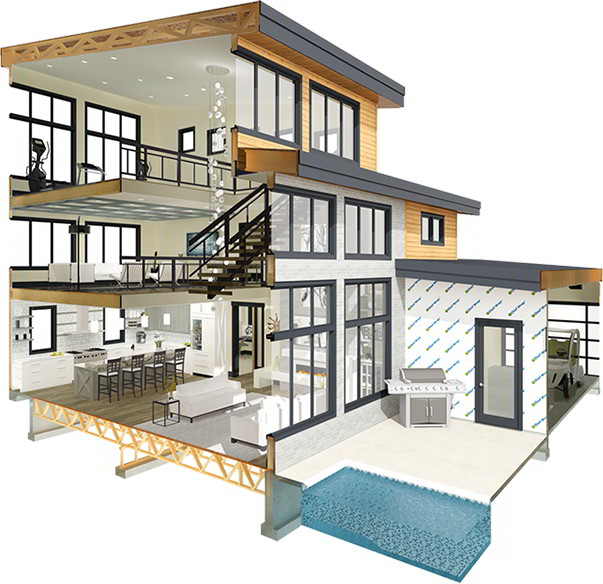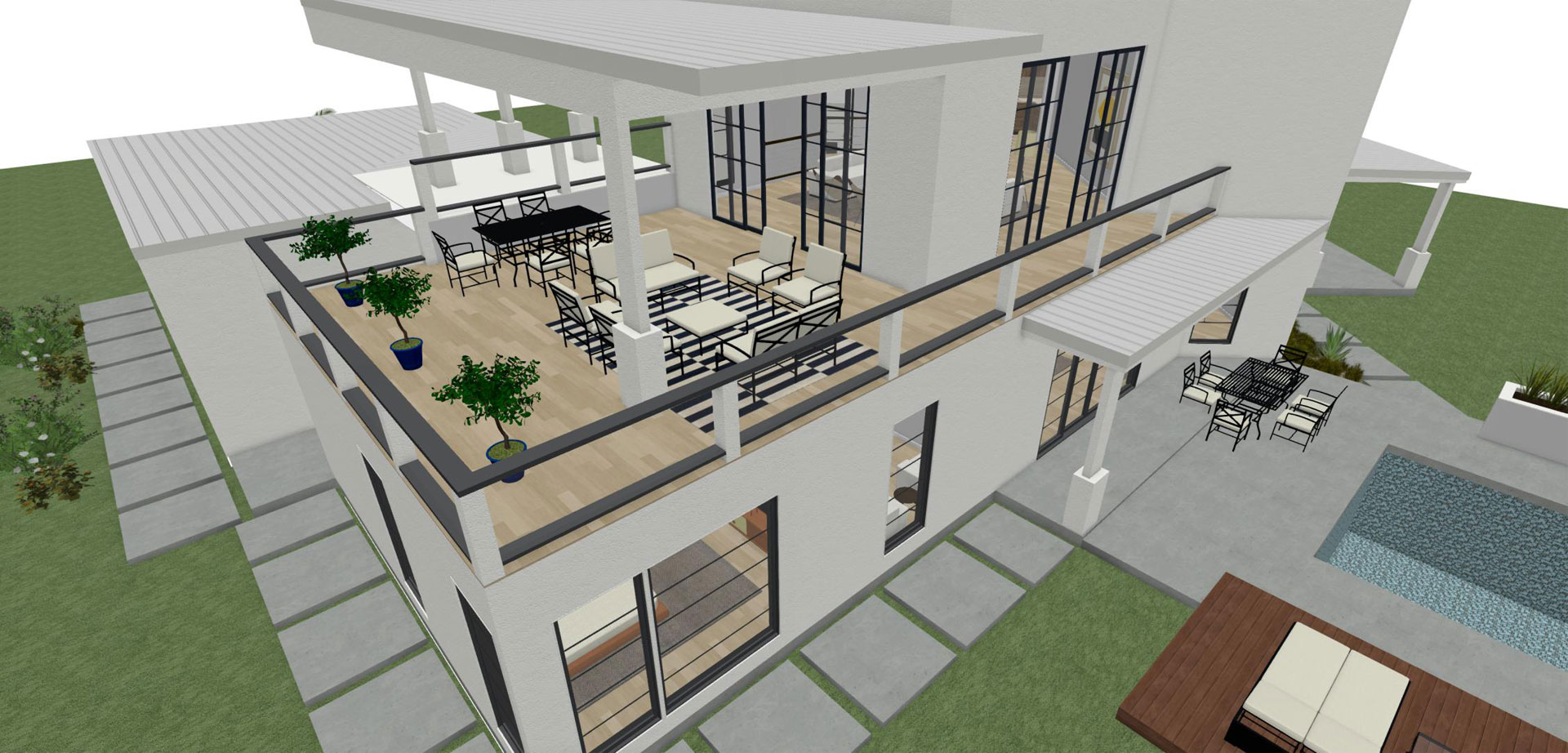Exactly How CDA Architects Incorporate Creative Thinking and Functionality in Modern Design
Exactly How CDA Architects Incorporate Creative Thinking and Functionality in Modern Design
Blog Article
A Thorough Overview of Architectural Styles and Their Influence on Modern City Planning and Growth
Building styles have long offered as a mirror to the societal worths and technical advancements of their time, playing an essential role in forming contemporary city preparation and advancement. From the splendour of Neoclassicism to the practical strategy of Brutalism, each design has presented distinct concepts that affect city appearances and performance.
Historical Introduction of Building Designs

As cultures transitioned with the Middle Ages, Gothic style emerged, identified by its verticality and complex outlining, mirroring the spiritual aspirations of the period. The Renaissance noted a resurgence of classical ideals, combining art and design in innovative manner ins which influenced subsequent designs across Europe.

Today, architectural styles proceed to evolve, driven by globalization and sustainability worries, mirroring a dynamic interplay in between heritage and development. This historical introduction emphasizes the importance of style as a mirror of societal development and as a driver for city advancement.
Trick Architectural Styles Explained
The diversity of architectural designs mirrors the myriad impacts that shape our built setting, each embodying unique attributes and social significances. Key architectural designs include Classical, Gothic, Baroque, Modernism, and Postmodernism, each representing special historic contexts and visual ideologies.
Classic architecture, rooted in old Greece and Rome, emphasizes symmetry, proportion, and making use of columns (cda architects). On the other hand, Gothic architecture, growing in the Center Ages, is identified by sharp arcs, ribbed vaults, and flying buttresses, producing an ethereal top quality in sanctuaries. Baroque style, arising in the 17th century, is noted by magnificence, sophisticated embellishment, and a vibrant interaction of light and darkness
Innovation, which got energy in the early 20th century, prioritizes function over kind, using new materials like steel and glass to create minimal frameworks. Postmodernism, responding against the austerity of Modernism, accepts eclecticism and historic recommendation, typically integrating playful elements and paradox.

Effect On Urban Preparation
In forming the advancement of cities, building designs considerably affect city preparation choices. The choice of building design often determines the visual appeals, performance, and general personality of metropolitan atmospheres.
In addition, building designs can influence zoning regulations and land use policies. Urban planners should consider the prevailing architectural patterns when making areas, making sure that brand-new advancements balance with existing structures. This consideration promotes cohesive metropolitan landscapes and enhances community identification.
The execution of details building styles can also influence socioeconomic factors within a city. High-end contemporary designs may bring in upscale locals and businesses, leading to gentrification, while extra budget friendly housing remedies may prioritize sensible and sustainable layouts to fit diverse populaces. cda architects. Inevitably, the interplay in between architectural designs and urban preparation produces vibrant cities that mirror both historical context and modern requirements, forming the lived experiences of their occupants
Sustainability and Modern Architecture
Building designs play an essential duty in attending to contemporary difficulties, specifically in the realm of sustainability. As city areas broaden and ecological concerns increase, modern design increasingly accepts lasting design principles that focus on energy effectiveness, source preservation, and very little eco-friendly impact.
Contemporary architectural movements, such as biophilic style and environment-friendly design, supporter for structures that balance with their environments, making use of natural materials and promoting biodiversity. These designs often incorporate sustainable power resources, such as solar panels and wind turbines, to minimize dependence on fossil gas and lower carbon footprints.
Additionally, the assimilation of innovative technologies, such as clever building systems, enhances energy administration, enhancing source use while making discover this info here certain occupant convenience. Innovative water management techniques, including rainwater harvesting and greywater recycling, additional add to sustainable urban atmospheres.
Significantly, sustainability prolongs beyond environmental issues; it includes social and economic dimensions as well. By fostering community health and advertising inclusivity, modern-day building styles align with sustainable advancement goals. The evolution of building methods continues to shape resistant cities that not just meet the demands of the present yet likewise safeguard the future for generations to come.
Community Involvement in Style
Community involvement in style offers as a crucial bridge in between designers and the populations they offer, making sure that the built setting reflects the demands and ambitions of its users. This joint process welcomes neighborhood members to contribute their insights and choices, fostering a feeling of ownership and obligation toward the rooms they occupy.
Efficient community involvement employs numerous techniques, such as workshops, studies, and public online forums, to gather diverse viewpoints. These methods promote a two-way dialogue, find permitting architects to comprehend local contexts while equipping citizens to voice their problems and desires. This inclusivity not only boosts the design high quality but likewise promotes social equity by addressing the special challenges faced by marginalized teams.
In addition, community interaction can bring about innovative services that might not emerge in a typical layout process. By integrating regional expertise and cultural values, designers can develop rooms that reverberate more deeply with users, improving functionality More Info and sustainability. Eventually, focusing on neighborhood interaction in style processes results in atmospheres that support social communications, assistance health, and reinforce community connections, thus playing an essential function in forming modern-day city landscapes.
Verdict
Building designs have actually profoundly influenced modern city preparation and growth, mirroring evolving social and technical contexts. The integration of historical aesthetics with modern requirements promotes metropolitan atmospheres that prioritize sustainability and community involvement. As cities continue to expand and adjust, the continuous dialogue between building heritage and modern-day style concepts will certainly stay important in creating comprehensive, vivid areas that improve lifestyle and advertise social equity. The future of city growth depend upon this harmonious equilibrium.
Report this page